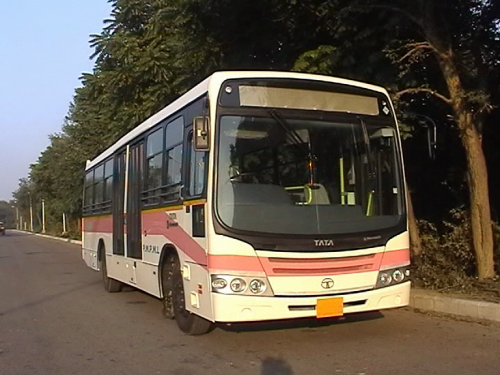Pune BRT: Recreating a vision

Source: ITDP
Pune, cultural capital of Maharashtra, has begun to develop a new, robust public transport system in the form of Bus Rapid Transit (BRT). The Pune metropolitan region is comprised of two municipal corporations—Pune and Pimpri-Chinchwad—with a population of over five million. The twin cities face a daunting challenge: how to preserve sustainable and equitable mobility when hundreds of new cars and motorcycles are being registered in the city daily. According to the Pune Municipal Corporation (PMC) Environment Status Report 2009–2010, the city now has 473 private vehicles for every 1000 people, but only one bus for every 6,250 people!
Citizens and the administrations of the two municipal corporations have voiced concerns over the future mobility needs of the region and BRT systems are increasingly being recognized as a key solution. It is also essential to ensure safety for pedestrians and to provide dedicated lanes for cyclists, who compete for road space with a rapidly growing number of motor vehicles.
ITDP is advising and assisting the Pimpri-Chinchwad Municipal Corporation (PCMC) in BRT planning and design. ITDP is also working with the Pune Mahanagar Parivahan Mahamandal Limited (PMPML), the municipal public transport agency, on the planning and structuring of public transport operations with an emphasis on BRT.
PCMC’s four BRT corridors, funded in part by the central government’s Jawarharlal Nehru National Urban Renewal Mission, measure a total of 50 km and will be built with median stations and high quality pedestrian and cycling infrastructure. Nearly 500 new buses with unique specifications are being procured for Pune and Pimpri-Chinchwad.
Today, PMPML has a fleet of 1,200 buses on a 1,900 km network, that carries over one million trips per day. The regular buses are subject to traffic delays, leading to irregular and infrequent schedules. There is a unique opportunity to restructure PMPML’s 331 existing bus routes to increase service frequencies on the busiest corridors while making the route network more legible for new customers.
¿Comments? ¿Opinions? ¿Similar News? Send them to us!
Tweet







